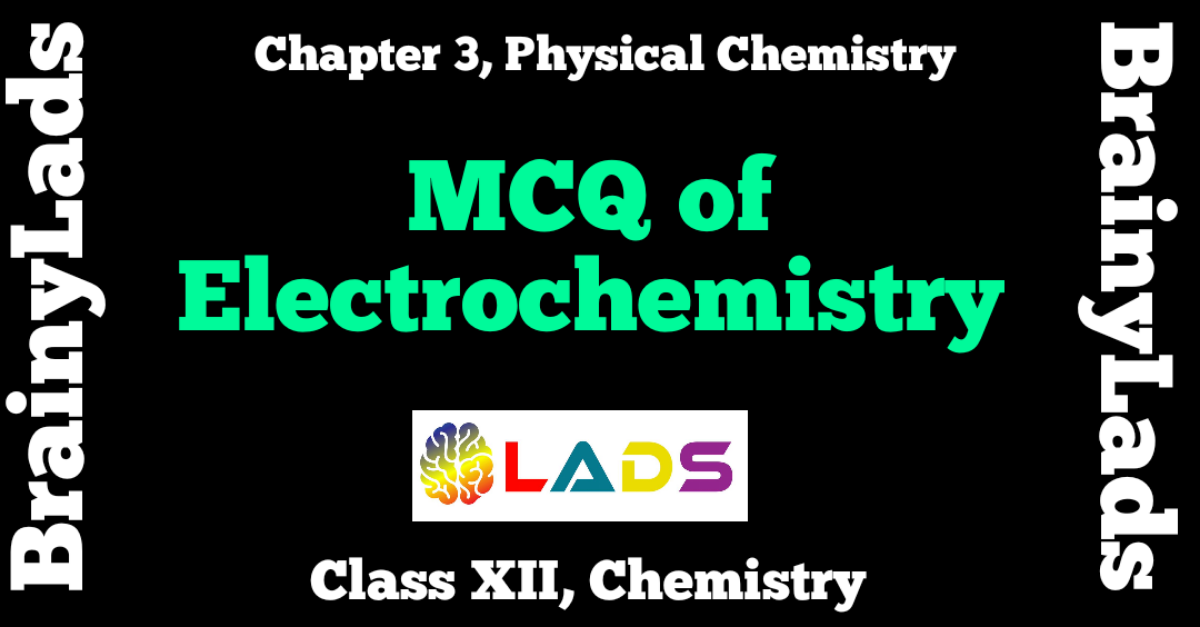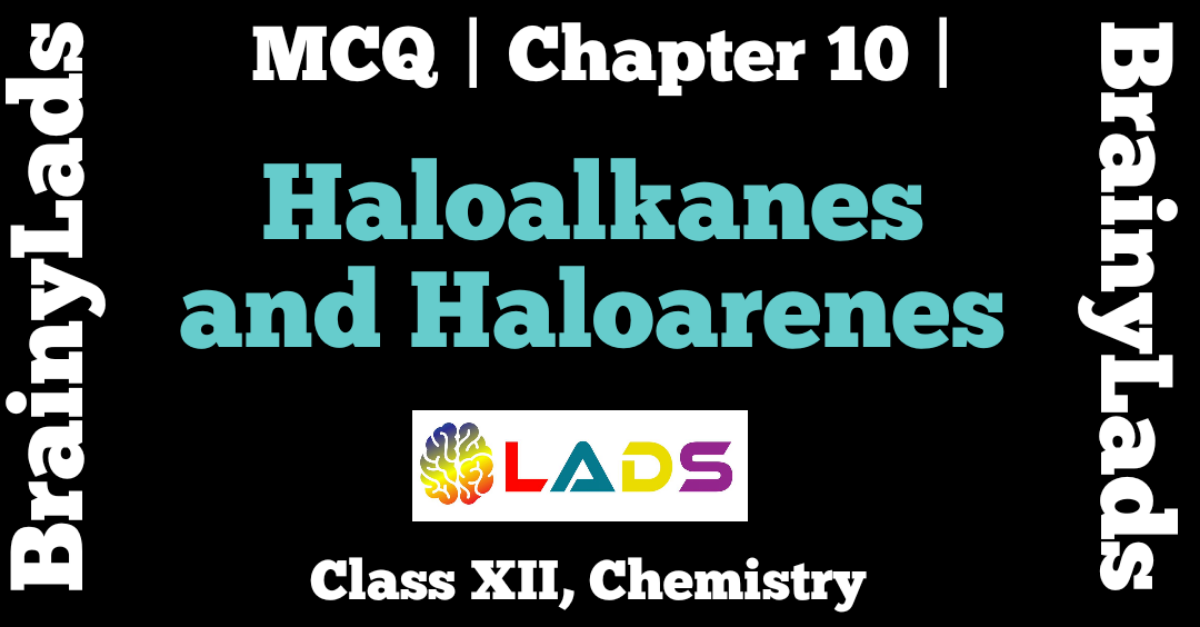MCQ of Surface Chemistry | Chapter 5 | Chemistry | Class 12 | CBSE |
MCQ of Surface Chemistry | Multiple Choice Questions of Surface Chemistry
MCQ of Surface Chemistry
Question 1: What type of interface cannot be obtained?
- Gas – Gas
- Solid – liquid
- Liquid – Gas
- Liquid – Liquid
Answer: A (Gas – Gas)
Question 2: Name the process by which freshly prepared precipitate gets converted to colloidal solution?
- Coagulation
- Electrolysis
- Diffusion
- Peptisation
Answer: D (Peptisation)
Question 3: Which of the following is less than zero during adsorption?
- ΔG
- ΔS
- ΔH
- All of these
Answer: D (All of these)
Question 4: The incorrect statement about physical adsorption is
- It lacks specificity
- It is generally reversible
- Porous surfaces are good adsorbent
- Heat of adsorption is quite high
Answer: D (Heat of adsorption is quite high)
Question 5: Fog is an example of colloid system of
- Liquid in gas
- Gas in liquid
- Solid in gas
- Gas in solid
Answer: A (Liquid in gas)
Question 6: Shape selective catalysis is a reaction catalysed by
- Zeolites
- Enzymes
- Platinum
- Ziegler Natta catalyst
Answer: A (Zeolites)
Question 7: The activity of an enzyme becomes ineffective
- At low temperature
- At atmospheric pressure
- At high temperature
- In aqueous medium
Answer: C (At high temperature)
Question 8: A colloidal system in which liquid is dispersed phase and solid is dispersion medium is classified as
- Gel
- Sol
- Emulsion
- Aerosol
Answer: A (Gel)
Question 9: Substances which behave as normal electrolytes in solution at low concentration and exhibit colloidal properties at higher concentration are called
- Lyophilic colloids
- Lyophobic colloids
- Macromolecular colloids
- Associated colloids
Answer: D (Associated colloids)
You may also read MCQ of The Solid State, MCQ of Solutions, MCQ of Electrochemistry, MCQ of Chemical Kinetics, MCQ of Surface Chemistry, MCQ of General Principles and Processed of Isolation of Elements, MCQ of the p-Block Elements, MCQ of the d-And f-Block Elements, MCQ of Coordination Compounds, MCQ of Haloalkanes and Haloarenes, MCQ of Alcohols, Phenols and Ether, MCQ of Aldehydes, Ketones and Carboxylic Acids, MCQ of Amines, MCQ of Biomolecules, MCQ of Polymers, MCQ of Chemistry in Everyday Life
Question 10: Which of the following examples is correctly matched?
- Butter – gel
- Smoke – emulsion
- Paint – foam
- Milk – aerosol
Answer: A (Butter – gel)
Question 11: The formation of micelles takes place only above
- Critical temperature
- Kraft temperature
- Inversion temperature
- Absolute temperature
Answer: B (Kraft temperature)
Question 12: Soap mixed with water below critical micelle concentration behave as
- Associated colloid
- Macromolecular colloid
- Normal electrolytic solution
- Multimolecular colloid
Answer: C (Normal electrolytic solution)
Question 13: Tyndall effect is not observed in
- Smoke
- Emulsions
- Sugar solution
- Gold sol
Answer: C (Sugar solution)
Question 14: Which of the following is not a method of removing impurities from a colloidal sol?
- Electrodialysis
- Ultrafiltration
- Ultracentrifugation
- Distillation
Answer: D (Distillation)
Question 15: Movement of the dispersion medium under the influence of electric field is known as
- Electrodialysis
- Electrophoresis
- Electro osmosis
- Cataphoresis
Answer: C (Electro osmosis)
Question 16: At CMC, the surface molecules
- Dissociate
- Associate
- Become bigger in size due to adsorption
- Become smaller in size due to decomposition
Answer: B (Associate)
Question 17: The separation of an emulsion into its constituent liquids is known as
- Emulsification
- Protection of colloid
- Coagulation
- Demulsification
Answer: D (demulsification)
Question 18: Which of the following is not an example of an emulsifying agent?
- Proteins
- Gums
- Soaps
- Electrolytes
Answer: D (Electrolytes)
Question 19: What happens when a lyophilic sol is added to a lyophobic sol?
- Lyophilic sol is protected
- Lyophobic sol is protected
- Both the sols are coagulated
- Electrophoresis takes place
Answer: B (Lyophobic sol is protected)
Question 20: The Brownian motion is due to
- Temperature fluctuation within the liquid phase
- Attraction and repulsion between charges on the colloidal particles
- Impact of molecules of the dispersion medium on the colloidal particles
- Convective currents
Answer: C (Impact of molecules of the dispersion medium on the colloidal particles)
Question 21: Which of the following is not characteristics of chemisorption?
- Adsorption is specific
- Heat of adsorption is of the order of 200 KJ mol-1
- Adsorption is irreversible
- Adsorption may be multimolecular layers
Answer: D (Adsorption may be multimolecular layers)
Question 22: Which property of colloid is not dependent on the charge of colloidal particles?
- Coagulation
- Electrophoresis
- Electroosmosis
- Tyndall effect
Answer: D (Tyndall effect)
Question 23: In the adsorption of a gas on solid, Freundlich isotherm is obeyed. The slope of the plot is zero. Thus, the extent of adsorption is
- Directly proportional to the pressure of gas
- Inversely proportional to the pressure of gas
- Independent of the pressure of the gas
- Proportional to the square of the pressure of the gas
Answer:C (Independent of the pressure of the gas)
Question 24: Which of the following can adsorb larger volume of hydrogen gas?
- Finely divided platinum
- Colloidal solution of palladium
- Small pieces of palladium
- A single metal surface of palladium
Answer: B (Colloidal solution of palladium)
[Hint: In colloidal solution particles are suspended and are more dispersed than powdered form]
Question 25: The term ‘sorption’ stands for
- Adsorption
- Absorption
- Both adsorption and absorption
- Desorption
Answer:C (Both adsorption and absorption)
Question 26: Which of the following is not a property for physical adsorption?
- Unilayer adsorption occurs
- Greater the surface area, more the adsorption
- Lower the temperature, more the adsorption
- Higher the pressure, more the adsorption
Answer: A (Unilayer adsorption occurs)
Question 27: The emulsifying agent present in milk that makes it stable is
- Lactose
- Maltose
- Casein
- Lactic bacilli
Answer:C (casein)
Question 28: Which of the following statements is incorrect?
- On prolonged dialysis colloid becomes stable.
- AgNO3 in excess KI forms negative colloid.
- AgNO3 in excess KI forms positive colloid.
- Medicines work best in colloidal form because of greater surface area.
Answer: C (AgNO3 in excess KI forms positive colloid.)
Question 29: Paints and hair creams are respectively
- Sol and emulsion
- Aerosol and foam
- Emulsion and sol
- Foam and gel
Answer: A (Sol and emulsion)
Question 30: The values of colligative properties of colloidal solution are of small order in comparison to those shown by true solutions of same concentration because colligative particles
- Exhibit enormous surface area
- Remain suspended in the dispersion medium
- Form lyophilic colloids
- Are comparatively less in number
Answer: D (Are comparatively less in number)
Do share the post if you liked it. For more updates, keep logging on BrainyLads


